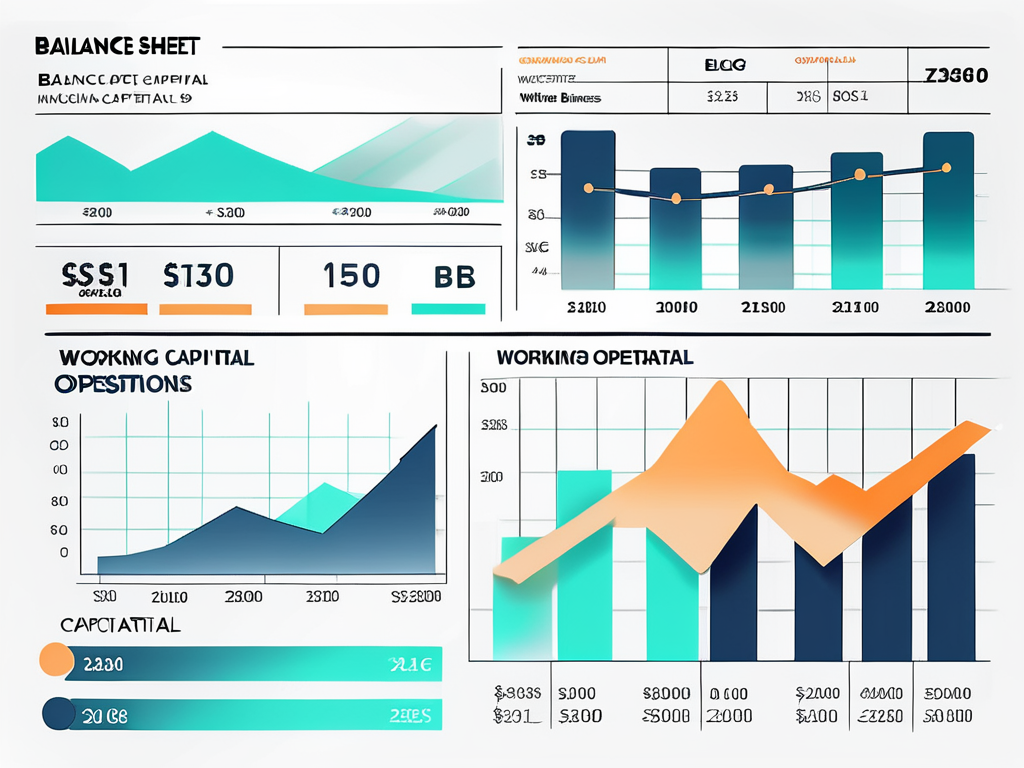Welcome, brave entrepreneurs, to the thrilling, roller-coaster ride of small business finance! Buckle up, because we’re about to dive into the exhilarating world of working capital. Yes, you heard it right, working capital! It’s not just a term that accountants throw around to sound smart. It’s the lifeblood of your business, the fuel that keeps the engine running. So, grab your calculators and your sense of humor, because this is going to be a wild ride!
Before we begin, let’s get one thing straight. We’re not talking about the kind of capital that wears a cape and fights crime. No, this is working capital, the unsung hero of the business world. It’s the money you need to keep your business running on a day-to-day basis. It’s the cash you use to pay your employees, buy inventory, and keep the lights on. In short, it’s the money that keeps your business alive and kicking. So, let’s get down to business!
What is Working Capital?
Working capital, in its simplest form, is the difference between your current assets and your current liabilities. It’s like the financial equivalent of a reality check. If your current assets are greater than your current liabilities, you’re in good shape. If not, well, you might want to start looking for a superhero cape.

But let’s not get ahead of ourselves. Current assets are things like cash, accounts receivable, and inventory. These are assets that can be easily converted into cash within a year. Current liabilities, on the other hand, are obligations that are due within a year. These include things like accounts payable, short-term loans, and accrued expenses. So, when you subtract your current liabilities from your current assets, you get your working capital.
The Importance of Working Capital
So, why is working capital so important? Well, imagine trying to run a marathon without any water. You might start off strong, but pretty soon, you’re going to be gasping for breath. That’s what it’s like trying to run a business without enough working capital. You might be able to keep things going for a while, but eventually, you’re going to run out of steam.
Working capital is what allows your business to operate smoothly. It ensures that you have enough cash to meet your short-term obligations and invest in your business’s growth. Without it, you could find yourself in a financial bind, unable to pay your bills or invest in new opportunities. In short, working capital is what keeps your business afloat in the choppy waters of the business world.
Calculating Working Capital
Now, you might be thinking, “This all sounds great, but how do I calculate my working capital?” Well, fear not, because we’re about to break it down for you. To calculate your working capital, you simply subtract your current liabilities from your current assets. It’s like a financial version of a subtraction problem. If you can subtract, you can calculate your working capital!
Let’s say your business has $100,000 in current assets and $75,000 in current liabilities. Your working capital would be $25,000. That’s the money you have available to keep your business running. If your working capital is positive, that’s a good sign. It means you have more assets than liabilities, which is always a good thing in the world of business. If your working capital is negative, well, it might be time to start looking for that superhero cape.
Managing Working Capital
Managing working capital is like juggling flaming torches while riding a unicycle. It’s a delicate balancing act that requires skill, precision, and a healthy dose of courage. But don’t worry, we’re here to help you navigate this financial tightrope.
The key to managing working capital is to keep a close eye on your current assets and liabilities. You want to ensure that you have enough assets to cover your liabilities, without tying up too much money in assets that aren’t generating a return. It’s like trying to keep all the plates spinning without letting any of them fall.
Improving Working Capital
So, how do you improve your working capital? Well, there are a few strategies you can use. First, you can try to increase your current assets. This could involve improving your collections process to get cash in faster, or managing your inventory more efficiently to reduce the amount of money tied up in stock.
Another strategy is to reduce your current liabilities. This could involve negotiating better terms with your suppliers to extend the time you have to pay your bills, or refinancing short-term debt to longer-term debt. Remember, the goal is to have enough working capital to keep your business running smoothly, without tying up too much money in assets that aren’t generating a return.
Working Capital Financing
If you’re struggling to maintain enough working capital, you might want to consider working capital financing. This is a type of loan that’s designed to boost your working capital and help you cover short-term expenses. It’s like a financial lifeline for businesses that are struggling to keep their heads above water.
Working capital loans can be a great way to inject some much-needed cash into your business. However, like all loans, they come with risks. You’ll need to make sure you can afford the repayments, and you’ll need to be careful not to overextend yourself. Remember, the goal is to improve your working capital, not to dig yourself into a deeper financial hole.
Conclusion
So, there you have it, folks! The thrilling, roller-coaster ride of working capital. It’s a crucial part of running a small business, and one that requires careful management. But with a bit of knowledge, some careful planning, and a healthy dose of humor, you can navigate the choppy waters of working capital and keep your business afloat.
Remember, working capital is the lifeblood of your business. It’s the money you need to keep your business running on a day-to-day basis. So, keep a close eye on your current assets and liabilities, manage your working capital carefully, and don’t forget to laugh along the way. After all, business is a serious matter, but that doesn’t mean we can’t have a little fun along the way!


